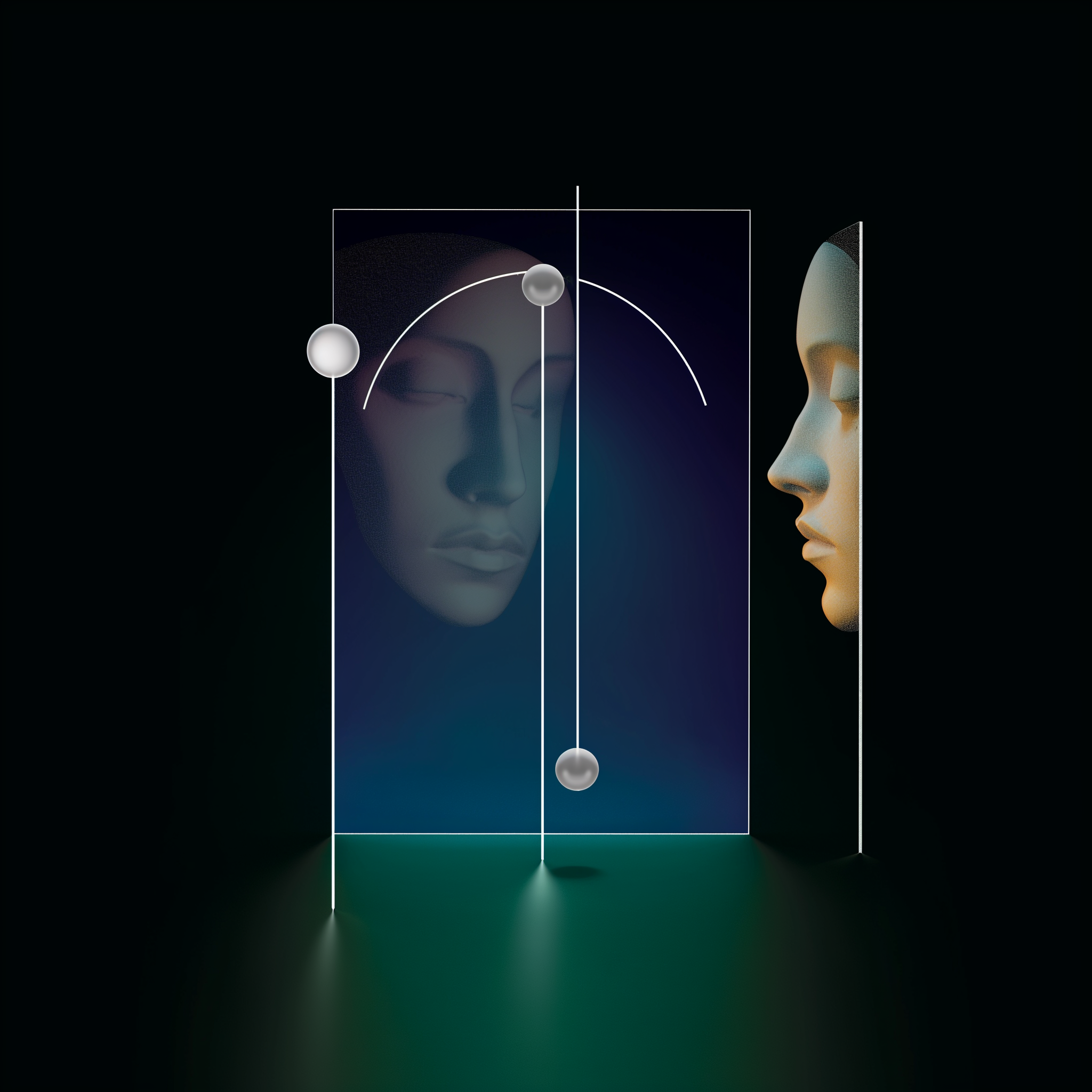Di - The Design Thinking GPT
Available on Open AI’s ChatGPT Platform
In the heart of every creative process lies the spirit of innovation — a spirit that continuously seeks new ways to see, understand, and shape the world. Recognizing this, I crafted "Di - The Design Thinking Workshop GPT" with a deep empathy for the challenges and aspirations of designers and innovators. My vision was to create a tool that not only assists but also inspires.
Generative AI, like Di, represents a leap forward in our creative journey. This technology is not a replacement for human creativity but a partner to it. Di is designed to be a collaborator, a source of inspiration that you can converse with, explore ideas, and solve complex problems together. It's a testament to how AI can augment human potential, not diminish it.
My journey in creating Di was fueled by a belief that in the hands of creative minds, AI can be more than just a tool; it can be a catalyst for a new era of design and innovation. This is not just about keeping pace with the future; it's about shaping it. Let's embrace generative AI with optimism and see how it can amplify our creative voices, making our ideas not just heard but felt in the deeper tapestry of human experience.
Overview
Di - The Design Thinking Workshop GPT is an innovative AI consultant, expertly crafted to assist a diverse range of industries in navigating the complexities of design thinking. Rooted in the celebrated frameworks established by IDEO and Stanford's d.school, Di offers a step-by-step guide through the design thinking process, tailored to meet the unique challenges and opportunities of your projects.
In-depth Design Thinking Guidance
Empathize: Di begins by guiding users through the 'Empathize' stage, emphasizing the importance of understanding the user's perspective. It provides techniques for gathering insights, such as user interviews, persona creation, and empathy mapping.
Define: In the 'Define' stage, Di assists in synthesizing the gathered insights to clearly articulate the users' needs and problems. It aids in framing problem statements and identifying key opportunity areas.
Ideate: During 'Ideate,' Di stimulates creative thinking, suggesting brainstorming techniques and ideation exercises. It encourages divergent thinking to generate a wide array of innovative solutions.
Prototype: In the 'Prototype' phase, Di advises on creating tangible representations of ideas. It offers methods for rapid prototyping, encouraging a hands-on approach to bring concepts closer to reality.
Test: Finally, in the 'Test' stage, Di helps in developing strategies to evaluate prototypes. It guides the iteration process based on user feedback, ensuring the solutions are user-centric and effective.
Built on Renowned Frameworks
Foundation in IDEO and Stanford's d.school Methodologies: Di - The Design Thinking Workshop GPT is deeply rooted in the principles and methodologies developed by the pioneering design firm IDEO and the renowned Stanford d.school. These institutions have been at the forefront of the design thinking movement, championing a user-centered approach to innovation.
IDEO's Influence: IDEO's approach to design thinking emphasizes creativity, collaboration, and a human-centric focus. Di incorporates these core principles, offering tools and techniques that mirror IDEO's emphasis on empathetic design, iterative prototyping, and cross-disciplinary teamwork. From facilitating brainstorming sessions to encouraging rapid prototyping, Di embodies IDEO's ethos of building deeply empathetic connections with users to drive innovation.
Stanford d.school's Framework: Stanford's d.school has been instrumental in academic and practical advancements in design thinking. Their framework, which outlines stages like Empathy, Define, Ideate, Prototype, and Test, forms the structural backbone of Di. By guiding users through these stages, Di ensures a comprehensive, methodical approach to problem-solving, mirroring the d.school's emphasis on experimental learning and a bias towards action.
Integration of Advanced AI Capabilities:
Adaptive Learning And Analysis
Di uses advanced AI algorithms to analyze user input, offering tailored suggestions and insights. This adaptive learning capability allows Di to provide more nuanced, context-specific guidance, akin to a live workshop experience.
Dynamic Interaction
Di's interactive nature facilitates a two-way dialogue, allowing users to delve deeper into each stage of the design thinking process. This dynamic interaction mimics the collaborative environment fostered in IDEO and Stanford's d.school workshops, encouraging users to question, reflect, and refine their ideas.
Real-Time Resource Integration
Di can access and integrate a wide array of resources in real-time, from case studies to research papers, aligning with IDEO's and d.school's practice of grounding innovation in a rich understanding of the current state of the art and real-world scenarios.
Customized Workshop Experience
Interactive Exercises: Di includes a variety of interactive exercises tailored to each stage of the design thinking process, ensuring an engaging and hands-on learning experience.
Real-Time Feedback: Offering real-time feedback and suggestions, Di dynamically adapts to the evolving needs of the project, ensuring a highly personalized experience.
Collaborative Problem-Solving: Di is designed to facilitate collaborative problem-solving, encouraging team participation and diverse perspectives.
A Case Study
Revolutionizing Urban Mobility with Di - The Design Thinking GPT
-
"CityMove Solutions," a startup specializing in urban transportation, aims to tackle the growing issue of urban congestion and pollution. They aspire to create an innovative, sustainable, and inclusive urban mobility solution leveraging cutting-edge technology. To achieve this, they turn to Di for guidance through the design thinking process.
-
Di's Role: Di steers CityMove Solutions to delve deep into the daily struggles of urban commuters, suggesting ethnographic studies and immersive experiences. It proposes shadowing commuters and organizing focus groups to gather rich, empathetic insights.
Outcome: The team gains profound insights into the challenges faced by diverse groups, including people with disabilities, the elderly, and low-income commuters.
-
Di's Role: With the gathered insights, Di aids in pinpointing the core issue. It facilitates the creation of empathetic personas and helps articulate a clear problem statement.
Outcome: The team defines their challenge: "Urban commuters need an affordable, accessible, and eco-friendly transportation solution that reduces congestion and pollution."
-
Di's Role: Di organizes a series of ideation sessions, introducing futuristic yet feasible concepts like AI-driven transportation networks and electric personal mobility devices.
Outcome: The team conceptualizes a network of autonomous, electric micro-vehicles that are accessible to all demographics and reduce the carbon footprint.
-
Di's Role: Di provides guidance on prototyping, emphasizing the importance of scalability and sustainability. It suggests creating a scaled-down model of the network and a prototype of the micro-vehicle.
Outcome: A functional prototype of the micro-vehicle and a digital simulation of the network are developed, showcasing efficiency and user-friendliness.
-
Di's Role: Di outlines strategies for real-world testing and feedback collection, focusing on user experience and environmental impact.
Outcome: Testing reveals high user satisfaction, significant reduction in carbon emissions, and improved urban mobility.
-
CityMove Solutions successfully introduces an innovative urban mobility solution. The project garners attention for its focus on inclusivity, sustainability, and technological innovation. Di's role in structurally guiding the team through a human-centric, empathetic process is highlighted as pivotal in achieving this groundbreaking solution.




